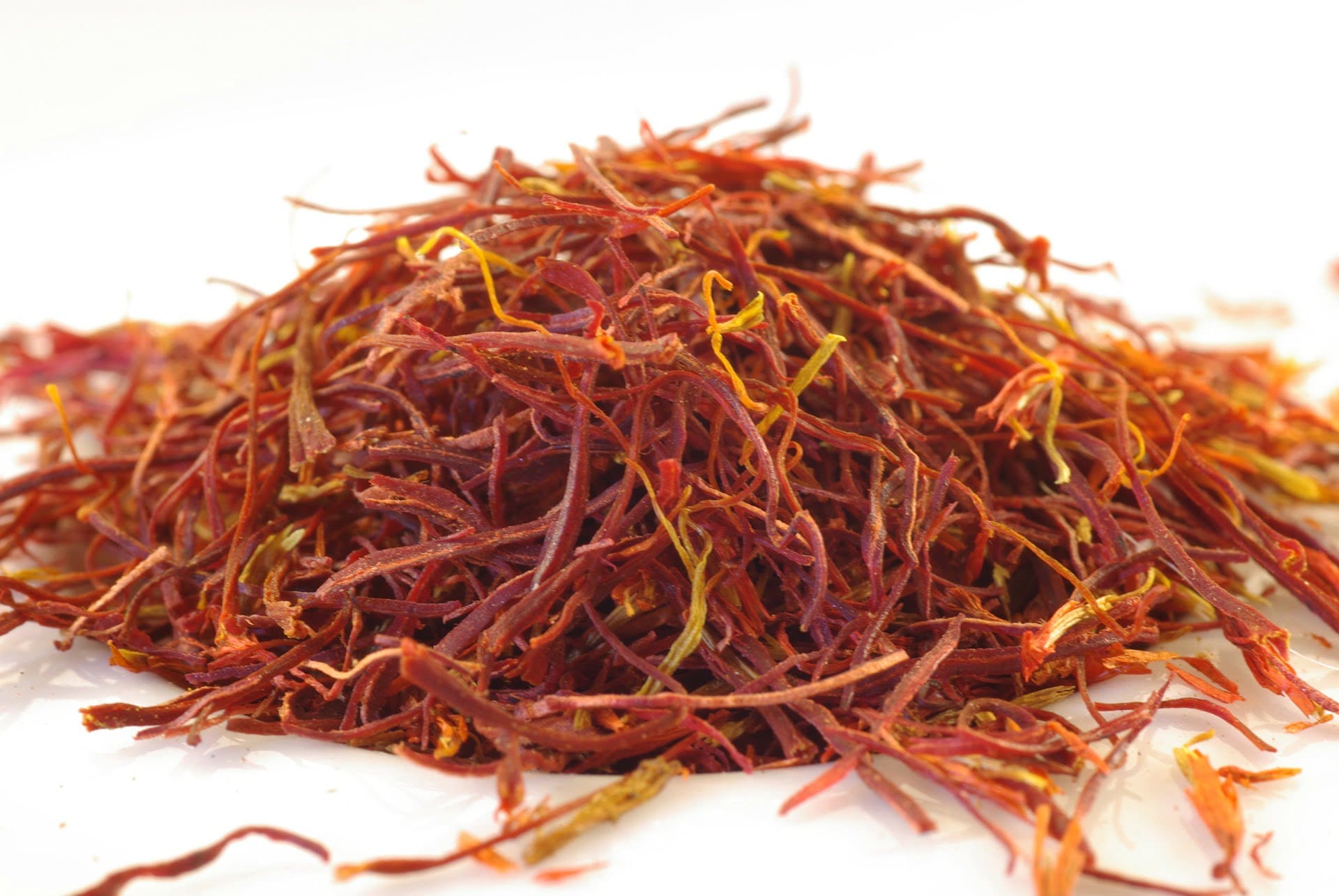Saffron, often referred to as “red gold,” is one of the most luxurious and sought-after spices in the culinary world. Its vibrant colour, unique flavour, and delicate aroma have made it a prized ingredient in kitchens for centuries. But what exactly makes saffron so special? Let’s uncover the magic behind this golden treasure.
What is Saffron?
Saffron is derived from the stigma (the tiny, thread-like structures) of the Crocus sativus flower, commonly known as the saffron crocus. Each flower produces only three stigmas, which must be harvested by hand—a labour-intensive process that contributes to saffron’s high cost. It takes around 75,000 flowers to produce just one pound of saffron!
The spice’s deep red threads and unmistakable aroma are what set it apart. It’s often used in minute quantities to add a golden hue, floral aroma, and slightly earthy, honey-like flavour to dishes.
Where is Saffron Used?
Saffron is a global spice with roots in many cuisines:
- Middle Eastern Cuisine: Saffron is used in rice dishes like Persian tahdig and stews such as fesenjan.
- Indian Cooking: Saffron lends its golden hue and fragrance to biryanis, kheer (rice pudding), and festive drinks like saffron-infused milk.
- Mediterranean Cuisine: Spanish paella and Italian risotto alla Milanese wouldn’t be the same without a touch of saffron.
- North African Dishes: Moroccan tagines and soups often feature saffron for added depth.
- European Pastries and Desserts: Saffron appears in buns, cakes, and custards, like Sweden’s saffron-infused lussekatter.
What Does Saffron Taste Like?
Saffron has a complex flavour profile that is difficult to describe. It’s subtly sweet with earthy, floral, and slightly bitter undertones. Its aroma is equally unique, often described as warm, hay-like, and honeyed.
How to Use Saffron in Cooking
- Rice Dishes: Add saffron to rice by steeping a pinch of threads in warm water or milk, then stirring the infusion into the dish. This method ensures even colouring and flavour.
- Stews and Soups: A few saffron strands can elevate the taste of broths, stews, or chowders, adding richness and depth.
- Baking: Incorporate saffron into bread or pastries for a touch of colour and an exotic aroma.
- Desserts: Use saffron in puddings, custards, and ice creams for a luxurious twist.
- Drinks: Infuse saffron into tea, milk, or even cocktails for a sophisticated beverage.
Health Benefits of Saffron
Saffron isn’t just a culinary delight—it also boasts several health benefits:
- Rich in Antioxidants: Saffron contains powerful compounds that combat free radicals and reduce inflammation.
- Mood Enhancer: Studies suggest saffron may help alleviate symptoms of depression and anxiety.
- Improves Digestion: Saffron is believed to promote healthy digestion and relieve stomach discomfort.
- Supports Heart Health: Saffron’s antioxidants may help lower blood pressure and cholesterol levels.
- Enhances Skin Glow: Used in skincare, saffron is said to brighten and rejuvenate the skin.
How to Choose and Store Saffron
When buying saffron, look for deep red threads with a strong aroma. Avoid powdered saffron, as it’s more likely to be adulterated. Store it in an airtight container in a cool, dark place to preserve its potency.
Why is Saffron So Expensive?
Saffron’s price reflects the effort involved in its production. Each thread is hand-picked, and it takes thousands of flowers to produce a small amount. Additionally, saffron’s unique flavour and versatility make it a valuable spice that’s worth every penny.
Final Thoughts
Saffron is more than just a spice—it’s a symbol of luxury, history, and culinary artistry. Whether you’re crafting a fragrant biryani, stirring it into a rich risotto, or infusing it into a soothing drink, saffron can elevate any dish to something truly extraordinary.
Why not treat yourself to a pinch of saffron magic in your next recipe? It’s an indulgence your senses will never forget!

